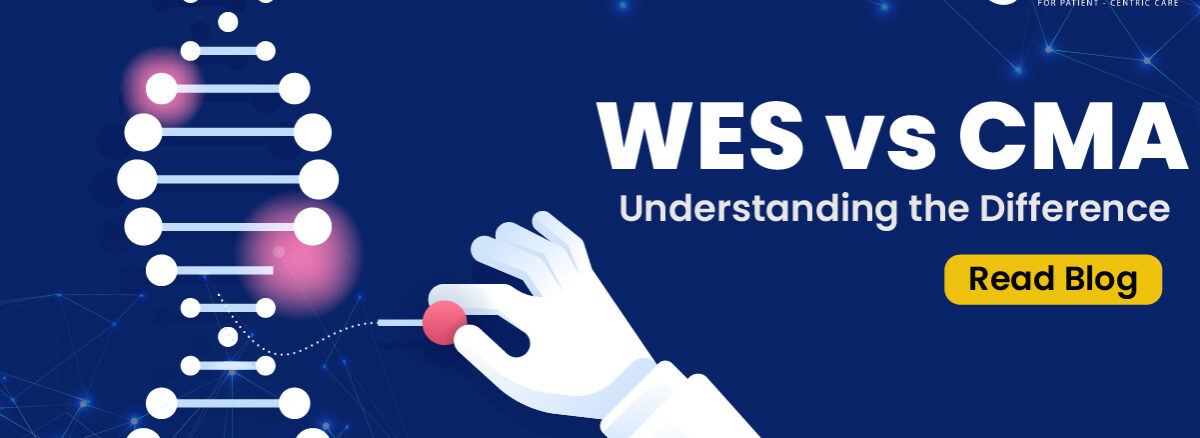Whole Exome Sequencing (WES) and Chromosomal Microarray (CMA) are two of the most frequently utilized methods. Each test serves an important function in diagnosing genetic disorders, but they operate in distinct ways. Recognizing these differences can empower individuals to make informed choices about their healthcare and determine which type of testing is most suitable for their needs.
What is Whole Exome Sequencing (WES)?
Whole Exome Sequencing is a genetic testing technique that focuses specifically on the exons, which are the coding regions of genes that translate into proteins. While the human genome contains over 20,000 genes, the exome comprises only about 1-2% of the entire genome. Despite this small fraction, the exome is significant because mutations in these regions can lead to various genetic disorders.
Key Features of WES:
Comprehensive Analysis: WES provides a broad overview of all the coding genes in the genome, making it highly effective for identifying rare genetic conditions.
Detection of Variants: It can detect single nucleotide changes, insertions, deletions, and other variants that might be responsible for diseases.
Research Applications: WES is not only useful for clinical diagnostics but also for research, as it can uncover new genetic associations with diseases.
What is Chromosomal Microarray (CMA)?
Chromosomal microarray is a more focused genetic testing method that looks at the entire genome to identify chromosomal abnormalities, such as deletions or duplications of segments of DNA. These abnormalities can lead to developmental delays, intellectual disabilities, and congenital anomalies.
Key Features of CMA:
High Resolution: CMA can detect much smaller chromosomal imbalances than traditional karyotyping, which often misses subtle changes.
Diagnostic Tool: It is particularly useful for diagnosing conditions associated with developmental disorders and congenital anomalies, such as autism spectrum disorder (ASD) and intellectual disabilities.
Rapid Results: CMA typically provides faster results compared to WES, making it a go-to option for urgent diagnostic cases.
Comparing WES and CMA
| Feature | Whole Exome Sequencing (WES) | Chromosomal Microarray (CMA) |
| Focus | Coding regions of genes (exons) | Chromosomal imbalances |
| Type of Variants Detected | Point mutations, small insertions/deletions | Deletions and duplications |
| Applications | Rare genetic disorders, inherited conditions | Developmental delays, congenital anomalies |
| Resolution | It is comprehensive but focuses on coding regions. | High resolution for chromosomal imbalances |
| Turnaround Time | Longer (days to weeks) | Shorter (days to a week). |
When to Choose WES or CMA?
Choosing WES: If a patient has symptoms that suggest a genetic condition but no clear diagnosis from initial testing, WES may be recommended to explore all possible genetic causes. It is especially valuable when investigating rare diseases where multiple genes could be involved.
Choosing CMA: it is often the first-line test for individuals with developmental delays, intellectual disabilities, or congenital anomalies. If there are specific concerns about chromosomal abnormalities, CMA is the more suitable option due to its sensitivity to detecting imbalances.
Understanding the differences between these two tests can help individuals and families make informed choices regarding genetic testing based on their specific needs and medical history. If you have questions about which test may be right for you or a loved one, consulting a genetic counselor or a healthcare professional is always a good step forward.
At Progenics Labs, we specialize in advanced genetic testing services, including WES and CMA. Our state-of-the-art laboratory is committed to providing accurate and timely results, helping patients and healthcare providers navigate the complexities of genetic conditions. With a focus on personalized medicine, Progenics Labs aims to enhance patient care through innovative genetic solutions.


